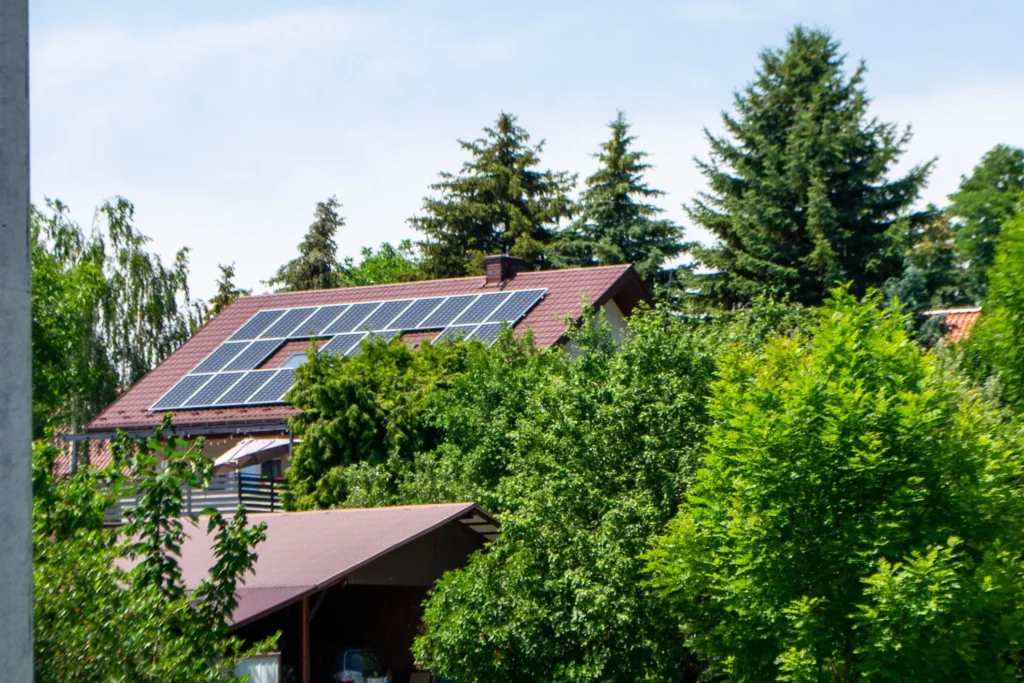Homeowners today are more conscious of their environmental impact and long-term financial health. The good news? These two goals can align beautifully through green home improvements. Making your home more energy-efficient, water-conscious, and eco-friendly doesn’t just benefit the planet, and significantly reduces your utility bills and boosts your property value over time.
In this article, we’ll explore smart green upgrades that deliver real, long-term savings—and why investing in them now can pay off for years.
1. Upgrade to Energy-Efficient Appliances
One of the most immediate and noticeable ways to lower your energy bill is by replacing outdated appliances with energy-efficient models. Look for those certified by ENERGY STAR®, which typically use 10–50% less energy than standard appliances.
High-impact replacements include:
- Refrigerators
- Washing machines
- Dishwashers
- HVAC systems
While there may be an upfront cost, the long-term savings on energy bills often outweigh the initial investment. Plus, many utility companies and local governments offer rebates for making these upgrades.
2. Install a Smart Thermostat
A smart thermostat can automatically adjust your home’s temperature based on your habits and schedule, ensuring energy isn’t wasted while you’re away. According to ENERGY STAR, using a smart thermostat can save you an average of $180 yearly on heating and cooling.
Some models even integrate with your smartphone, allowing you to make adjustments remotely—a minor upgrade that can lead to significant financial and environmental benefits.
3. Insulate and Seal Your Home
Insulation might not be the most glamorous upgrade, but it’s one of the most cost-effective. Proper insulation reduces the amount of heating and cooling required to keep your home comfortable year-round.
Focus on:
- Attics
- Basements
- Crawl spaces
- Doors and windows (consider weather stripping or caulking)
The U.S. Department of Energy estimates that sealing air leaks and adding insulation can save you up to 20% on heating and cooling costs annually.
4. Switch to LED Lighting
Switching your home’s lighting to LED bulbs is a low-cost, high-return improvement. LED bulbs use at least 75% less energy and last up to 25 times longer than incandescent lighting.
Replacing the bulbs throughout your home can result in significant energy savings over time, and the difference in light quality is often barely noticeable, if not an improvement.
5. Install Low-Flow Fixtures
Water conservation is another area where green upgrades save both resources and money. Installing low-flow showerheads, faucets, and toilets can reduce water usage by 30% or more.
These fixtures maintain intense water pressure while using less water, which lowers your water bill and decreases the energy needed to heat that water.
6. Solar Panels: A Long-Term Investment
Solar panels have become more accessible and affordable in recent years. While the upfront cost is significant, federal tax credits, state incentives, and financing options can make them a worthwhile long-term investment.
In many cases, homeowners see a return on investment in as little as 7–10 years. And after that, you may enjoy nearly free electricity for the system’s life, often 20 years or more.
7. Landscape with Native Plants
Sustainable landscaping not only beautifies your property but also saves money and resources. Native plants typically require less water, fertilizer, and maintenance than non-native species.
Incorporate rain gardens, permeable paving, and drought-resistant greenery to reduce outdoor water use and create a more eco-friendly yard.
Bonus Benefit: Increased Home Value
Green improvements do more than cut utility bills—they can significantly boost your home’s resale value. Buyers are increasingly looking for energy-efficient homes, and many are willing to pay a premium for sustainable features.
When it’s time to sell, your investment can pay off through higher offers and faster sales. Some upgrades may influence home appraisal costs, as energy efficiency and sustainable features are becoming more relevant in determining a home’s market value.
Final Thoughts
Green home improvements are a win-win for your wallet and the planet. Whether you’re installing a smart thermostat, upgrading insulation, or going all-in with solar panels, these investments offer both immediate and long-term savings. And as energy costs continue to rise, the value of sustainable living becomes even more apparent.
Start with one or two small upgrades, and build from there. Over time, your home will not only be greener and more efficient—but also more valuable and cost-effective to maintain.
Also Read-First Home Buyer’s Playbook: Smart Tips to Win Your Dream Home


